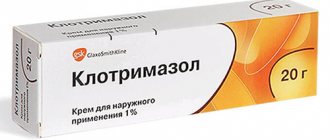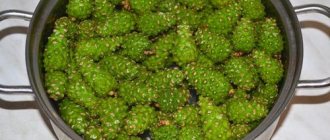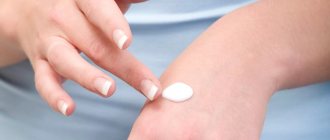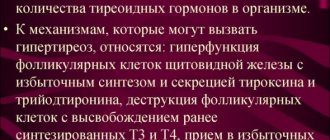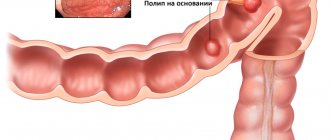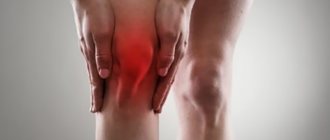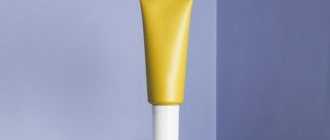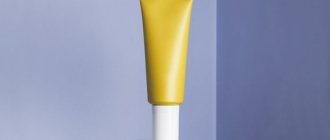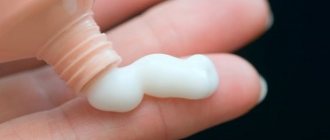Eczema is a chronic skin pathology that manifests itself in the form of foci of inflammation on the body, arms, legs and head. Rashes that form on the skin go through several stages of development: primary redness, dense nodules that transform into blisters, then weeping erosions form, which during the healing process are covered with a scab (the so-called “crust”). The last stage is peeling. Against the background of eczema, secondary purulent infections often develop. If left untreated for a long time, cosmetic defects of the skin may appear in patients of all ages.
Causes of eczema
The exact cause of this condition is unknown, but the process is based on an overactive reaction of the body's immune system to an irritant or allergen. Substances are formed in the cells of the dermis that cause inflammation, which is associated with the main symptoms. It is also known that the tendency to this disease is inherited.
The therapy is aimed at suppressing inflammation and allergies, as well as healing, eliminating itching and dryness.
Topical medications are available in various forms. Each type of skin lesion has its own dosage form.
- Ointment - has a fatty base with which the medicine is mixed directly, it is more suitable for dry eczema and dermatitis on the hands, it cannot be used on wet areas, it may not be hormonal, or contain hormones. The active components penetrate the skin well, and the fat base itself is not absorbed.
- The cream contains water with a medicine dissolved in it, which is mixed with a fat base. Contains significantly less fat than ointment, so it is suitable for weeping eczema. It is better absorbed and does not leave greasy marks on clothes. The healing components of the cream penetrate the skin less well and usually act in its upper layers.
- In the paste, the concentration of dry substances is more than 25%.
- Lotion is a liquid dosage form (usually an aqueous solution of a drug plus oil). Lotions are suitable for wet conditions, as well as on the head under the hair.
Expert opinion
— The selection of hormonal/non-hormonal agents for external use is carried out by a specialist after collecting an anamnesis, identifying the causes that provoked the disease, and examination.
Firsakova Svetlana Sergeevna, dermatovenerologist, Melanoma Unit Moscow clinic
What to do if eczema on the face worsens?
In case of exacerbation and the appearance of characteristic rashes on the face, accompanied by itching, a dermatologist may prescribe hormonal medications (solutions, creams, ointments) that will quickly relieve inflammation and itching.
At the Paramita clinic they do things differently. Mostly non-drug treatment methods are prescribed. Reflexology courses are excellent for relieving acute symptoms. After the first session, inflammation and itching are significantly reduced, and after the second or third, all symptoms disappear if the patient came at the initial stage of the disease. Advanced stages can be stopped in the fifth or sixth session. To consolidate the treatment, it will take 10 to 15 sessions.
Hormonal agents
All hormonal medications contain synthetic derivatives of the adrenal cortex. In a healthy body, they play the role of stress mediators and help adapt the functioning of all organs to changing conditions. Their ability to regulate immunity makes them very useful in many dermatological diseases in which inflammation and allergies play a role. Glucocorticoids affect the functioning of cells responsible for the inflammatory process. Thanks to this, chemical compounds that cause symptoms do not enter the bloodstream. Hormones enter the dermis layers and eliminate redness, swelling, itching, and rashes.
Hormone therapy is contraindicated in certain conditions:
- Rosacea
- Acne
- Viral diseases of the epithelium
- Skin infection caused by bacteria or fungi
- Reaction to vaccine administration
- Tuberculosis
- Scabies
- In pregnant women and children, these medications should not be applied to large areas of the body or covered with a bandage.
Advantan
A modern medicine that is well tolerated and has minimal negative effects. This ointment effectively helps relieve symptoms of psoriasis, eczema and dermatitis, and can be used on the arms and legs, as well as on the face. The drug practically does not enter the bloodstream; even after application over large areas, traces of this drug are not detected in the blood. Advantan is approved for people of any age. Expectant mothers should be treated with caution. Local side effects rarely occur with long-term therapy without medical supervision. This may include atrophy, redness and acne. Systemic adverse effects have not been described.
Hydrocortisone
It is based on the synthetic steroid hydrocortisone, one of the weakest glucocorticoids, with which it is better to start treating eczema. If the lesion covers a large area, the skin is severely damaged and is covered with a bandage, hydrocortisone is likely to enter the bloodstream and produce systemic effects.
Hydrocortisone can be treated from the age of two; it is prohibited during pregnancy.
Dermovate
This drug is the most powerful among pharmacological products with glucocorticoids. It is prescribed only in the most acute period, then switching to less powerful drugs. You should not use it for more than four weeks, as this may lead to side effects. At the same time, if the effect of therapy is not visible within several weeks, you need to recheck the diagnosis, because Dermovate shows extremely high effectiveness for eczema conditions.
Lokoid
Lokoid is a very strong glucocorticoid. It is effective for severe forms of atopy, but with prolonged use it causes serious atrophy of the skin, which sometimes persists even after discontinuation. Lokoid is absorbed into the bloodstream in small quantities, but systemic side effects, unlike local ones, easily go away after the end of the course. Pregnant women are allowed to be treated with Lokoid, using caution. Although it enters the bloodstream and through the placenta, a very short course of therapy is usually required, so there is no harmful effect on the fetus.
Lorinden
Loriden's formulation contains a powerful glucocorticoid combined with salicylic acid, which dissolves epithelial scales and helps the hormone penetrate deeper and work better, and also disinfects the skin in the area of application.
It is safe for children and expectant mothers only in small areas.
Prednisolone
This is a medium-strength remedy with which you can begin treating mild to moderate eczema. It easily penetrates the blood, so the course of treatment should be short, and during pregnancy it should be used carefully.
Soderm
This is an effective ointment for eczema on the skin, including the hands and face, is safe for use in adults and children, and patient reviews indicate that it is well tolerated. The active substance Soderma practically does not penetrate into the blood.
Flucinar
A highly active steroid with pronounced anti-inflammatory activity. Prescribed only for a short course due to local side effects. Since it enters the body, it can cause systemic complications and is contraindicated for pregnant women.
Fluorocort
Fluorocort has high activity, but is quite well tolerated. The result is achieved in 10 days, but if necessary, it is safe to use Fluorocort for up to 25 days.
Celestoderm-B
Contains an active and strong glucocorticoid, which effectively eliminates symptoms, but practically does not pass into the bloodstream. They also produce a combination cream with the addition of the antibiotic gentamicin, which suppresses the growth of microorganisms in the epidermis, but is contraindicated in children.
Cynacort
Cinacort contains the synthetic corticoid triamcinolone, which is well tolerated and has a pronounced anti-inflammatory effect. Suitable for dry eczematous changes, and the cream is suitable for swelling, weeping, as well as in skin folds and the border with the mucous membrane.
Elokom
A modern medicine with very strong anti-inflammatory and anti-allergic effects. It does not cause atrophy and does not enter the body. Due to its prolonged activity, it must be applied once a day. It can be used with caution by pregnant women.
Treatment with folk remedies at home
Folk remedies should be used with caution and only as prescribed by a doctor, as they can not only be beneficial, but also harmful. Therefore, patients should use them only after consulting a doctor. Traditional medicine recommends:
- rosehip flower ash cream; take the tops and flowers of the rose hips, dry them and burn them; mix a teaspoon of ash with three teaspoons of any hypoallergenic cream and lubricate the affected areas on the face with it 2 – 3 times a day;
- ointment made from nuts and fish oil; take several walnuts, bake them in the oven until brown, remove the shell, crush the kernel to a powder, dilute with fish oil to a paste and lubricate the affected areas of the skin 2 - 3 times a day.
Non-hormonal ointments
The formula of non-hormonal anti-eczema pharmaceutical products includes various compounds that mitigate the symptoms of the disease. In some cases, using one of the non-hormonal ointments is sufficient to achieve remission. Combination medications are aimed at several components of the disease at once. They work well and have no systemic complications. Local adverse events vary depending on the formulation.
Akrustal
The active ingredient of this brand is solid oil. It helps with flaking, itching, and inflammation, although the exact mechanism by which it works is unclear. Solidol causes contact dermatitis, so upon first use it is necessary to test the reaction on a small area of the body surface. With prolonged use, oil acne appears due to the fact that solid oil clogs the ducts of the sebaceous glands. If such a reaction occurs, it is recommended to apply Akrustal every other day.
Boron-zinc-naphthalan ointment
This is a combination drug that is used for inflammatory diseases of the epithelium. Boric acid in its composition is an antiseptic. Zinc oxide dries and has an astringent effect, which is useful for weeping. Naftalan oil has a strong anti-inflammatory effect, relieves redness and itching, and cleanses the skin.
Heparin
Contains heparin, which resolves blood clots in the veins and improves blood flow. Thanks to auxiliary additives that dilate blood vessels in the dermis and increase tissue permeability, heparin is more easily distributed under the skin in the area of application. In addition, the composition includes a local anesthetic, which reduces itching, pain and the feeling of fullness. This ointment is useful against venous eczema, but is not effective against atopic eczema on the arms, face and torso.
Dermasan
This is a liquid with a very simple composition, which is used for dry skin, irritation and cracks. Glycerin softens and soothes, and ethyl alcohol destroys germs.
Levomekol
A combined drug that has a wound-healing effect and also fights bacteria that cause infection.
Losterine
A series of combined agents that have a good therapeutic effect for atopic dermatitis. A unique component of the Losterin series is naftalan oil, a powerful anti-inflammatory agent that soothes irritation, reduces swelling, itching and redness, and promotes healing. In addition, among the active ingredients are urea, which is a good emollient, salicylic acid (softens and exfoliates), D-panthenol and almond oil.
Methyluracil
Methyluracil enhances metabolism in epithelial cells, stimulates their division and promotes regeneration.
Radevit
The working components of Radevit are vitamins A, E and D. Vitamin A promotes the renewal of epithelial cells. Vitamin E is an excellent antioxidant. Vitamin D fights inflammation and improves cell nutrition.
Salicylic
Salicylic acid softens scales and helps cleanse the skin in case of eczematous lesions. It also regulates the functioning of the sebaceous and sweat glands, which is useful for seborrheic dermatitis. Thanks to its antiseptic properties, it prevents infection of epidermal lesions. Contraindicated for children.
Skin Cap
Skin Cap cream and shampoo contain the therapeutic component zinc pyrithione. The main direction of Skin Cap's work is anti-inflammatory. It softens the epithelium, eliminates itching and flaking. Active against fungi that support inflammation and flaking in seborrheic dermatitis. Zinc pyrithione also fights bacteria that complicate eczema.
Solipsor
Solipsor products contain medical grease and birch tar, which fight inflammatory manifestations, and natural herbal extracts soothe, eliminate itching, and destroy microorganisms. Solidol sometimes provokes contact dermatitis, so for the first time Solipsor should be tried on a small area.
Thymogen
Thymogen regulates cell renewal, stimulates tissue regeneration and healing.
Zinc paste
Having drying and astringent activity, zinc paste makes it easier to get wet.
Elidel
A highly effective medicine, comparable in strength to hormones. Elidel, penetrating into the dermis, inhibits the division of immune cells responsible for the formation of inflammation and blocks the release of allergy mediators. Elidel does not cause atrophy, does not affect general immunity (even when taken orally, in the form of tablets), and does not reduce resistance to infections. Approved for children from 3 months of age, but not yet sufficiently studied during pregnancy. Adverse reactions such as infection at the site of application are rare with very long-term use.
Emolium
This is a line with significant moisturizing activity. Emulsion Emolium contains natural oils, urea, paraffin oil and other emollients, that is, substances that help the body retain moisture as much as possible.
Eplan
Contains a solution of lanthanes in glycerin - the active Glycolan complex, which promotes skin regeneration and rapid healing of damage, and also prevents infection.
Types and first symptoms of eczema on the face
Symptoms of the disease depend on the type of eczema. There are several of them.
True
True eczema (idiopathic) on the face, when acute, has a weeping form. Weeping eczema on the face develops due to the large number of blood vessels in this area. The disease begins acutely and has several characteristic stages:
- erythematous (initial)
- redness of the skin - symmetrical itchy red spots appear; - papular
- elevations form on the reddened surface - papules; - vesicular
- bubbles (vesicles) with transparent contents appear on the papules; severe itching bothers you; - erosive
- the bubbles burst, forming erosion; serous wells appear on their surface - serous fluid comes out of them and accumulates on the surface in the form of dew drops; - cortical
– erosions dry out and crusts form; after they fall off, first dry peeling remains, and then pigment spots on the skin.
The transition from acute to subacute and chronic occurs gradually. The surface of the affected areas becomes bluish, vesicles appear on it during an exacerbation and there are significantly fewer of them than during an acute course. Gradually, the surface becomes dry and pronounced peeling appears on it. This is dry eczema on the face. But sometimes even a chronic course can be weeping.
Microbial
Microbial eczema on the face develops against the background of some existing skin infection. On the face it can be bacterial (streptococcal, staphylococcal) or fungal (candidomycosis). Microbial appearance on the face can take the following forms:
- Sycozoform
- develops against the background of skin infections in the mustache and beard area in men; Sometimes sycosis develops from cuts during shaving. - Paratraumatic
- inflammation develops against the background of infected wounds and burns. - Coin-shaped (numular, plaque)
- with rounded rashes, on the surface of which all the characteristic stages of eczema develop; sometimes this form has an abortive course and then itchy, dry red flaky spots appear on the skin - eczematids, similar to manifestations of psoriasis.
Microbial eczema begins on the surface of the skin affected by the infection, first on one side, but then it acquires a recurrent course and a symmetrical character - the same lesion appears on the healthy side.
Seborrheic eczema
Seborrheic eczema on the face is a consequence of increased sebum secretion against the background of neuroendocrine disorders. Sebum changes its chemical composition, becomes thicker, and clogs the sebaceous ducts. An infection develops in the closed ducts, and then an allergy develops.
Signs of seborrheic lesions: reddish nodular rashes on the face (eyebrows, cheeks) and at the border with the hair. After some time, their heads turn yellow - a sign of suppuration. The entire affected surface is covered with grayish-yellow greasy scales. Itching is moderate.
At the border with the scalp, with seborrheic eczema, a red border is formed, covered with fatty scales, it is often called the crown. The resulting large plaques have uneven scalloped edges. When the acute stage of the disease ends, the lesions fade from the center to the periphery, forming ring-shaped figures.
Occupational eczema
The reason is exposure to irritating substances during professional activities. It is rare in the facial area, but sometimes such cases occur. Over time, contact dermatitis (inflammation of the skin) develops on the skin, acquiring the character of a symmetrical inflammatory process.
Side effects
Complications from medicinal products containing glucocorticoids in the area of their application are associated with their effect on cell repair.
- Atrophy. At the site of application, the epidermis becomes thin, dull, easily damaged, and loses hair.
- Decreased protective function of the body. Acne appears and infection easily develops.
In some cases, the hormone contained in the drug mixture can enter the bloodstream and cause a systemic complication. Glucocorticoids affect blood pressure, sugar levels, lead to a significant decrease in immunity, obesity, osteoporosis, and cause growth retardation in children. To prevent hormones from causing such disorders, they should only be used under medical supervision. The doctor will give recommendations on how long and how often to apply the ointment for eczema, depending on whether the area of application is on the arms, legs or body, will help reduce the dose or change treatment in time and, of course, will tell you the name of the most suitable drug for this case.
Side effects of non-hormonal ointments manifest themselves in the form of irritation or an allergic reaction. Medical solid oil in some medications provokes the appearance of contact dermatitis.
Treatment of eczema on the face at the Paramita Clinic
The Moscow Paramita clinic uses all the latest medicinal and non-medicinal treatment methods. The doctors of the clinic know how to treat eczema on the face, as they were trained in the best European and Eastern medical institutions and know all the intricacies of the approach to treatment.
To avoid relapses, it is necessary to eliminate the cause of the disease.
Read more about our unique method of treating eczema
The clinic practices:
- drawing up an individual treatment plan for each patient;
- inclusion in the individual plan of the entire range of treatment procedures necessary for a given patient;
- monitoring the effectiveness of treatment and, if necessary, adjusting it;
- conducting courses of preventive anti-relapse treatment.
Everyone who comes to the Paramita clinic for help is completely satisfied with the results of the treatment; one or two courses of treatment per year are enough for them to forget about skin problems.
Sign up for a free initial appointment
Prevention
For prevention, two types of care products are used.
- Moisturizing products with powerful emollients, such as urea and glycerin, soften and prevent the body from drying out due to the fact that, distributed in the outer layers of the epidermis, they attract moisture. They are applied throughout the day as needed.
- Natural oils, waxes and silicones create a protective barrier on the surface of the skin, preventing moisture evaporation. They are best used after a shower and applied to a damp area of the body.
Microbial eczema in pregnant women
Often pregnant women can suffer from dermatosis. Their body undergoes certain changes. The immune system is weakened and hormonal levels are disrupted. There are no particular risks for the fetus or woman. But unpleasant sensations such as itching and a constant desire to scratch create some discomfort. If painful symptoms occur, you should immediately visit a dermatologist.
Methods for diagnosing skin diseases:
- Diagnosis of skin diseases
- Diagnosis of skin diseases at home
- Diagnosis of allergic skin diseases
- Diagnosis of bacterial skin diseases
- Diagnosis of viral skin diseases
- Diagnosis of hair diseases
- Diagnosis of nail diseases
- Diagnosis of skin tumors
- Blisters on the skin
- Dermatoscopy
- Demodex tests
- Diagnosis of sexually transmitted infections
- Mushroom tests
- Skin scraping
Bibliography
- Akhtyamov, S.N. Practical dermatocosmetology / S.N. Akhtyamov, Yu.S. Butov. M.: Medicine, 2003. - 391 p.
- Arkhangelskaya, E.I. Materials on the clinic, etiology and pathogenesis of diffuse streptoderma and microbial eczema: abstract. dis. Dr. med. Sciences / E.I. Arkhangelskaya. L., 1973. - 38 p.
- Aizikovich, JI.A. Abstracts of scientific works of the VIII All-Russian Congress of Dermatovenerologists / JI.A. Aizikovich, T.V. Sokolova. 4.1. // Dermatology. - 2001.- P. 205.
- Buxton, P.K. Dermatology / P.K. Buxton. M.: Publishing house BINOM, 2005, - 175 p.
- Belousova, T.A. Neurogenic factors in the pathogenesis of eczema: abstract. dis. . Ph.D. honey. Sciences/T.A. Belousova. M., 1984. - 18 p.
- Demidova, M.A. Epidemiological and pharmacoeconomic aspects of the use of antihistamines in the treatment of patients with eczema / M.A. Demidova, E.V. Bogdanova // Ross. magazine skin and venereal diseases. 2009. - No. 2. — P. 46-49.
- Kudryavtseva, E.V. Lokoid and modern approaches to external therapy of atopic dermatitis / E.V. Kudryavtseva, AB Karaulov // Immunopathology, allergology, infectology. 2003. - No. 4. — P. 57-62.
- Mikhailenko, A.A. Allergy and allergic diseases /AA Mikhailepko, G.A. Bazanov. M.: Med. information agency, 2009. - 304 p. thirty.
- Prokhorenkov, V.I. Eczema / V.I. Prokhorenkov, T.A. Yakovlev 3rd ed. - Krasnoyarsk: PIK "Offset", 1994. - 255 p.
Microbial eczema in children
Infants aged two months to six months, as well as children and teenagers, can develop microbial eczema. Painful signs may appear:
- For hereditary reasons;
- Due to weak immunity;
- For diabetes mellitus;
- In children with a disrupted endocrine system;
- Against the background of ongoing allergic diseases.
The above reasons are associated with hormonal fluctuations. A baby who feeds on mother's milk is not afraid of this disease. Those who are healthy, kept clean, do not suffer from dermatosis.
Inexpensive and cheap ointments and creams for eczema
Treatment of eczema requires constant use of ointments and creams. This can be a significant blow to the budget. Among the drugs offered, it is possible to choose inexpensive drugs that are effective in combating the disease.
| Title, description | Price |
| Salicylic ointment. It relieves the main symptoms well and quickly. Is safe and effective | 20 rub. |
| Zinc ointment. Effective against all types of skin lesions. | 20 rub. |
| Baby cream. Helps soften the skin after using medications. | 20 rub. |
| Prednisolone. Hormonal ointment. Allowed to be used after a doctor's prescription. | 20 rub. |
| Vishnevsky ointment. Effectively relieves inflammation. Has a detrimental effect on pathogenic microflora. | 30 RUR |
